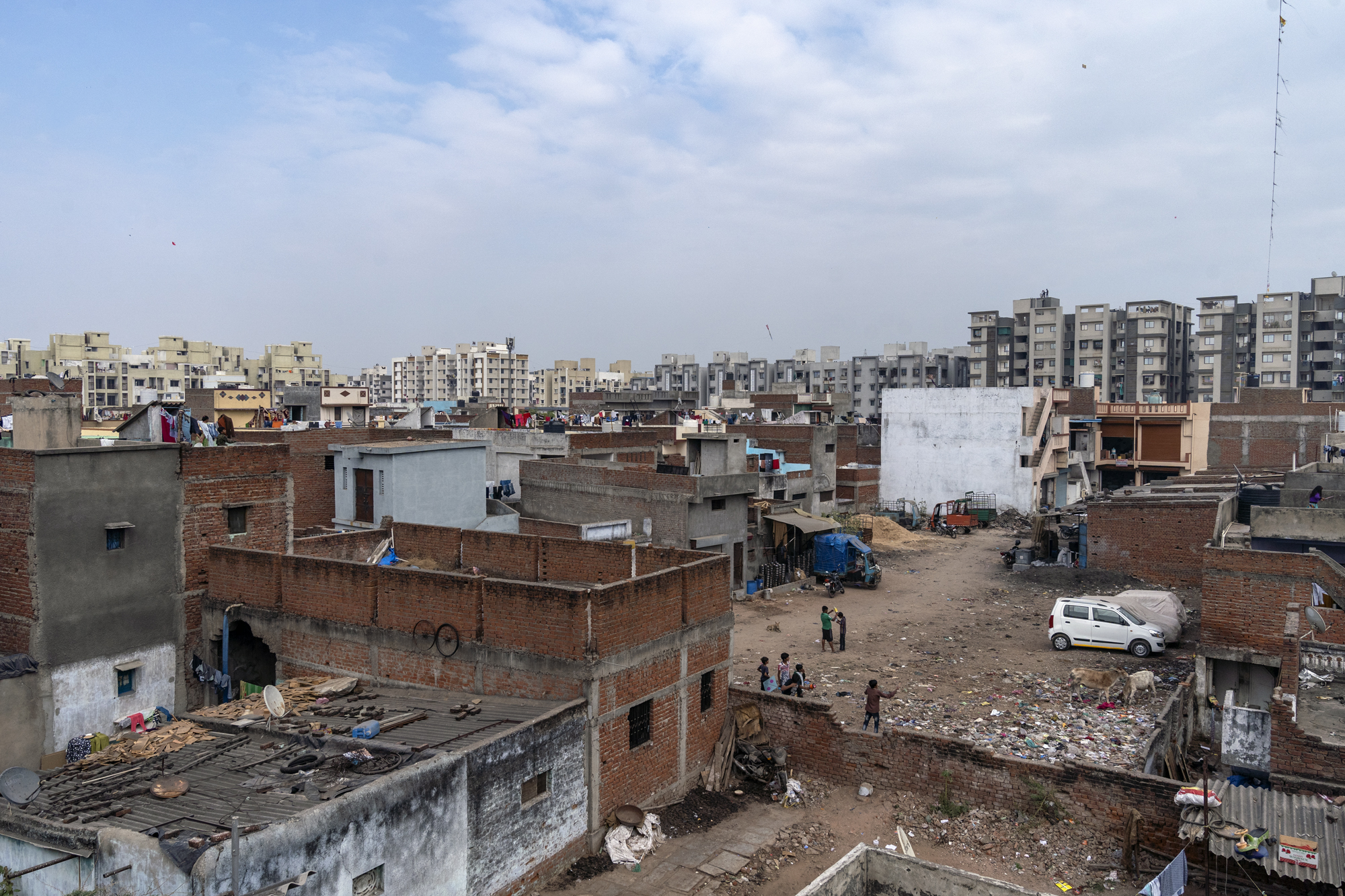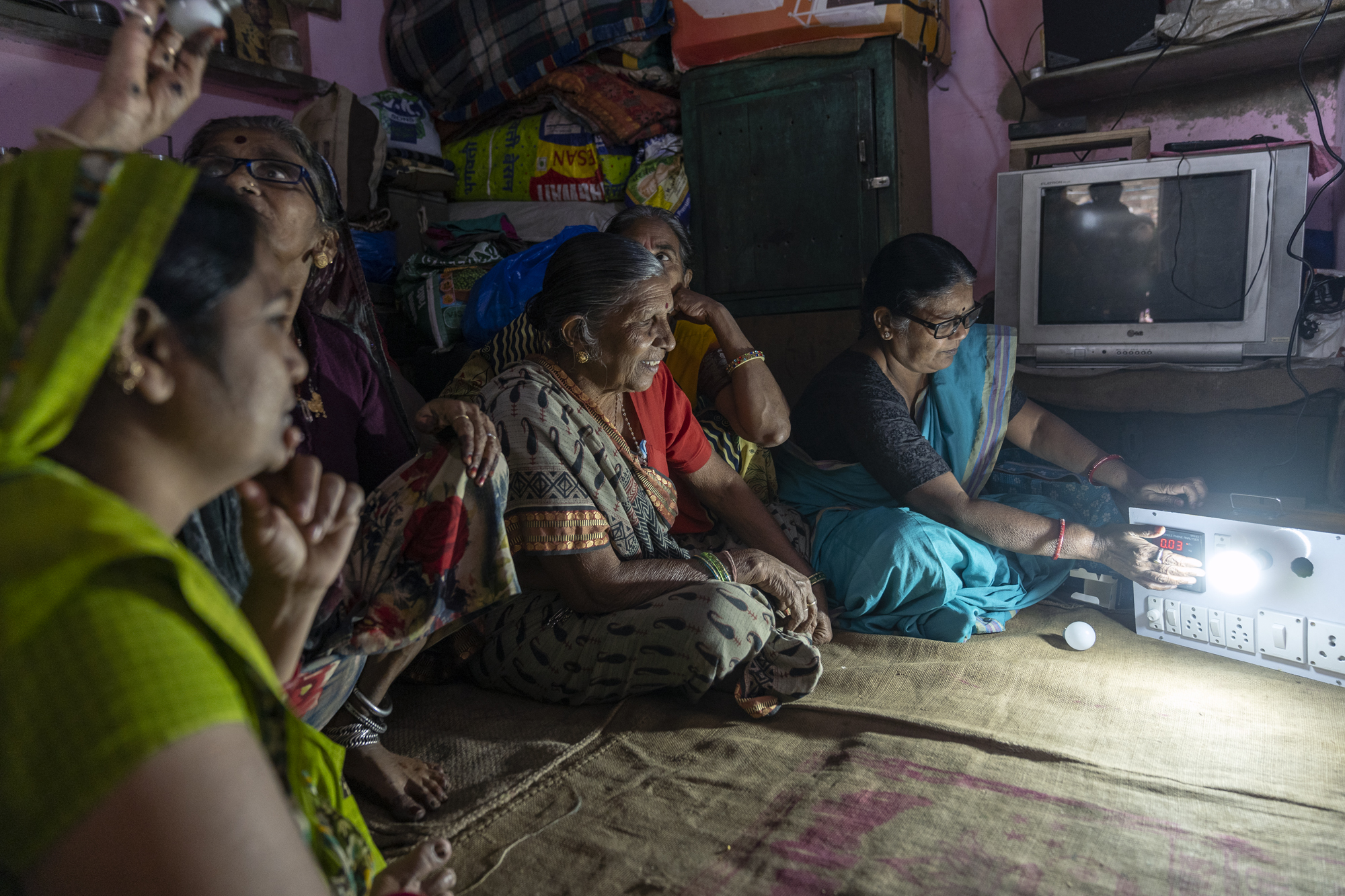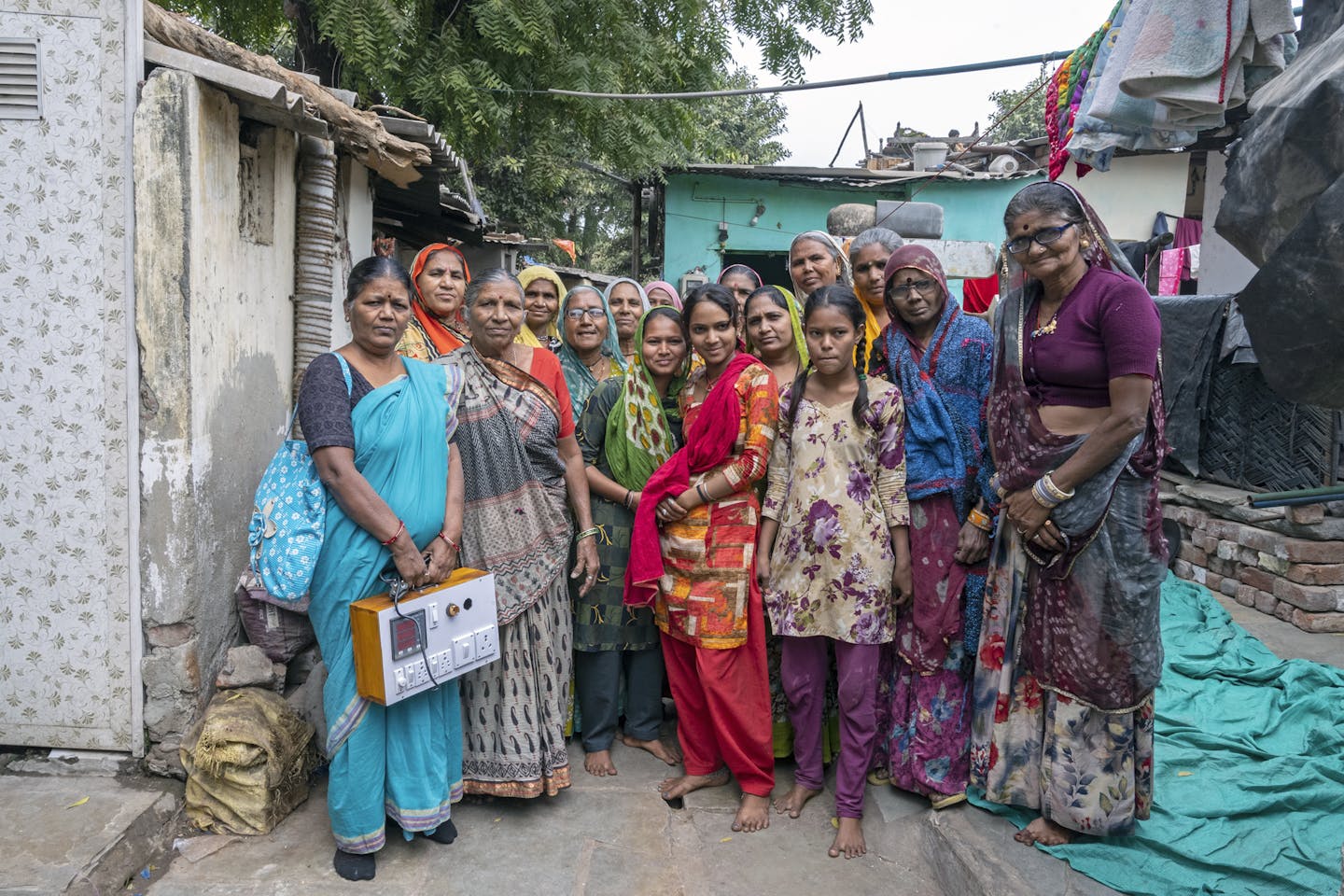In Ahmedabad, women act to make slums climate-resilient, one house at a time
Farida Sheikh remembers her house in the slums in Ahmedabad feeling like a furnace, where summer temperatures have reached up to 50 degrees Celsius. But for the last four years, the situation inside the house has cooled down.
The two-room house’s metal sheet roof, which raised the indoor temperature by two or three degrees, was replaced by ModRoof – a special cooling roof locally manufactured from coconut husk and paper waste. This brought the indoor temperatures in summer three to five degrees lower than the reading outdoors.
Protected from the scorching heat, Sheikh says that related health issues have reduced, the children can study and the family can operate their home-run kite-making business in safe conditions.
The house in the heat-stressed western Indian city is one amongst hundreds that has improved its climate resilience with the help of an NGO, Mahila Housing Sewa Trust (MHT).

Vishwas Nagar slums in the city of Ahmedabad, Gujarat. The urban poor are more vulnerable to rising climate change impacts such as heat stress and floods. Image credit: Kartik Chandramouli
Ahmedabad experienced one of its worst heatwaves in 2010 with 1,344 deaths, while 24,223 people lost their lives between 1992 and 2015 across India. In 2019, the country faced its longest heatwave in three decades, and the year concluded a decade of exceptional global heat and high-impact weather due to climate change.
As the population in urban centers becomes denser, climate change pressures such as heatwaves, water scarcity, and floods could make the standard of living in cities fall drastically, especially for the poor.
MHT, with its 25 years in the field empowering women from marginalized communities and resolving housing issues, pitched in to help slums adapt to the impacts of climate change. With approximately $1.2 million support from the Global Resilience Partnership from 2015, they expanded their climate resilience program to reach 100 slums across eight Indian cities, one in Nepal and another in Bangladesh.
“We focus on four stresses that are prevalent in a majority of the slums - heat stress, floods, vector-borne diseases, and water scarcity,” says Siraz Hirani, senior program manager at MHT.
Priya Dutta, senior research associate at the Indian Institute of Public Health, Gandhinagar, says that concretization and lack of green spaces contribute to heat-trapping in cities. “Women, the elderly and children are most vulnerable to extreme heat,” says Dutta, who worked on developing the Ahmedabad Heat Action Plan.
The social enterprise branches out from facilitating the installment of cooling roofs or cheaper alternatives such as sun reflective white paint, to also include early warning systems for heat as well as floods, water quality testing, and cleanliness drives among other initiatives.

Krishnaben (in blue), a trained energy auditor and Climate Saathi, demonstrates the energy-efficiency of a bulb in one of the houses in a slum in Ahmedabad.
Photo by Kartik Chandramouli
These solutions are all women-led. MHT organizes women from informal and formal slum settlements into Community Action Groups (CAG). They then proceed to train and equip leaders or Vikasinis.
“Our Vikasinis participate in stakeholder meetings with local authorities, institutes, and other society members to discuss local issues,” says Bijal Brahmbhatt, director of MHT, which won at the 2019 United Nations Global Climate Action Awards at COP25. “They all know the right authority and the officials to approach to resolve matters.”
Some of these women are also educated about climate change and its impact on their lives, and made aware of the solutions available. These Climate Saathis (partners) then advocate the solutions to other women in the community. MHT’s co-operative credit schemes make these solutions financially accessible through loans to install ModRoofs costing around $1,100 to $1,400. They have also helped over 30,000 households purchase energy-saving products.
The enterprise has trained 13,781 Climate Saathis to date.
Some women are trained energy auditors who go door-to-door advising on making homes energy-efficient. Using a wattmeter to demonstrate the energy consumption of owned devices and explaining how costs can be saved in the long run with energy-saving products, people shed their reluctance of buying new and more expensive appliances. By connecting people to the right vendors, the auditors also earn a livelihood through commissions.
In one of the one-room houses, she explains a far more nuanced issue in front of a home shrine - its lights are almost never switched off. Surrounded by women, she uses the wattmeter to display a low energy consuming bulb that can be used instead to save energy and costs.
Roughly 15 kilometers away in Vishwas Nagar slums, Meenaben’s house has been transformed from a heat box to a well-ventilated, energy-efficient home where she now runs a government-approved child daycare center. The ceiling is a ModRoof adapted to fit four energy-efficient LED bulbs, the roof has solar panels and the walls are decorated with colorful charts. Meenaben proudly says that she saves around $4.5 (INR 400) per month on her electricity bill.
Her neighbors and relatives from another colony are planning to bring some of these changes to their homes too, making the city resilient, one house at a time.


